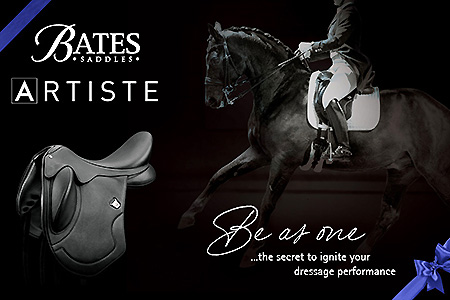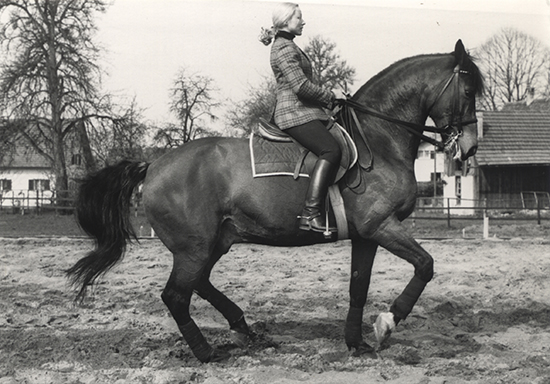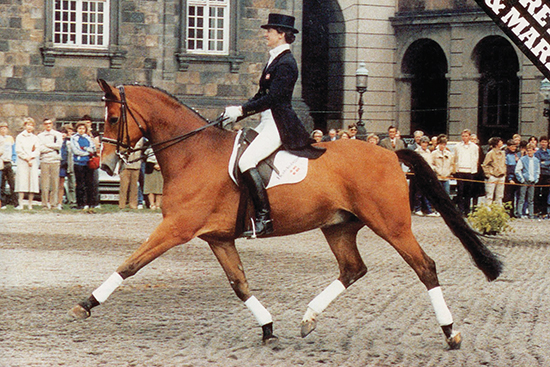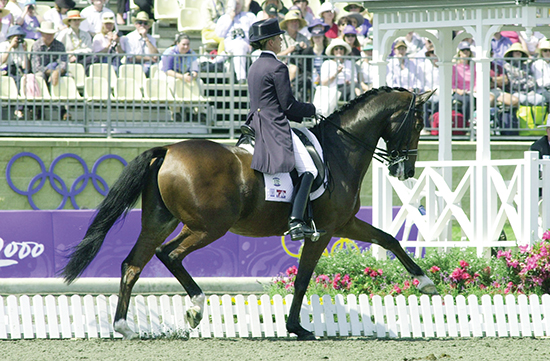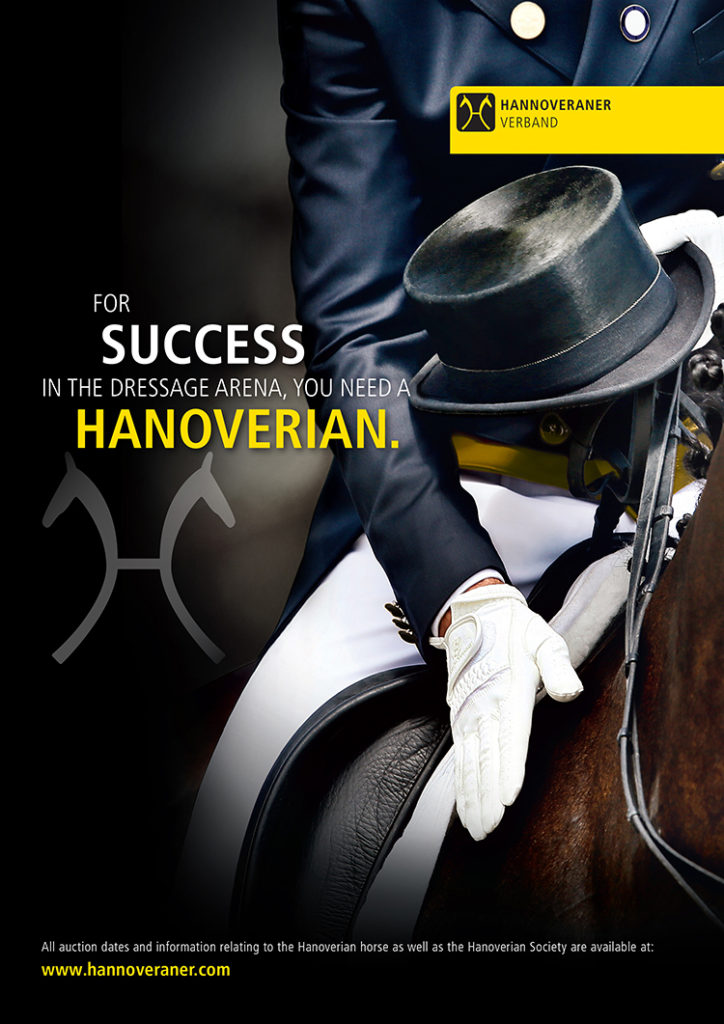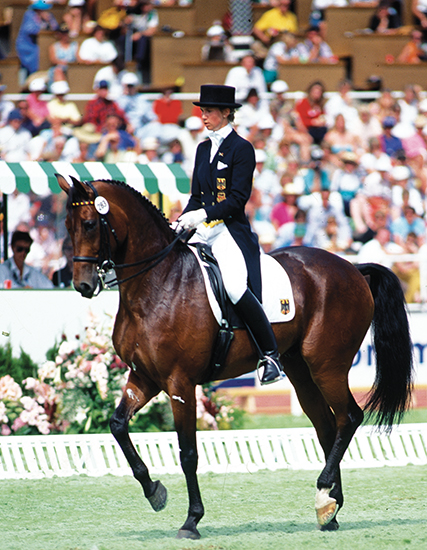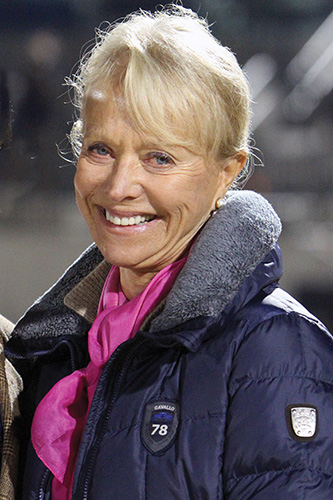 By Anne Gribbons (FEI/USEF judge – Former technical advisor to the US Dressage Team)
By Anne Gribbons (FEI/USEF judge – Former technical advisor to the US Dressage Team)
Looking back on the various types of horses who have gained fame as international stars in the dressage arena, you will discern a trend which resembles the hemline fashions over the years. Let’s start with Pepel…
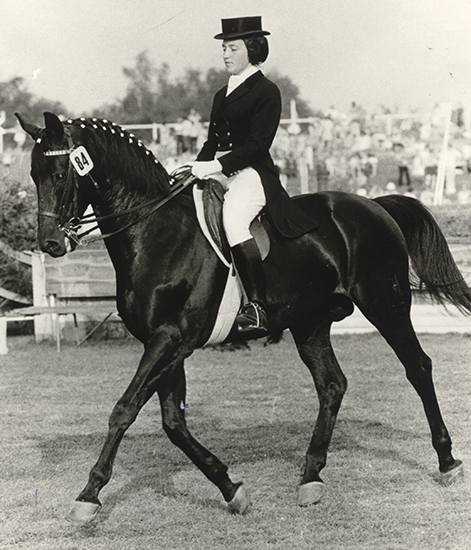
Pepel
Pepel, ridden by Elena Petuschkova of Russia – the small black Russian ballet dancers, a picture lightness and refinement – soon to be replaced by Granat with Christine Stückelberger on board – the giant who made the earth shake and the judges’ boxes rattle.
Granat
When the ‘Granat fad’ died out and many riders owned an 18-hand dinosaur they could not move out of the spot, Marzog ridden by Anne Grethe Jensen of Denmark, entered the arena to lighten up the picture.
Marzog
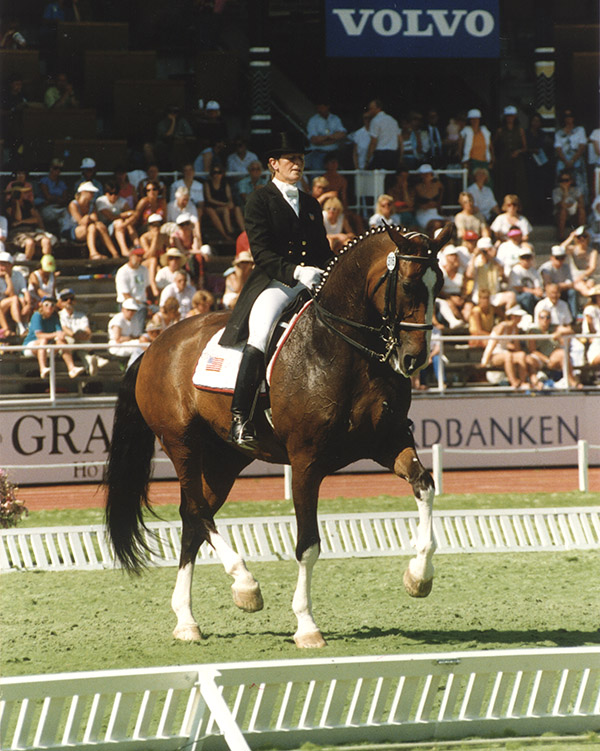
With the arrival of Gifted (with Carol Lavell) it was fire and brimstone again, while Rembrandt and Nicole Uphoff balanced the scale, and Bonfire and Anky van Grunsven were waiting in the wings with a whole new concept in gaits.
Bonfire
more follows…
Duckling to Swan
This all goes to show us that good things come in all kinds of packages, and although we profess to look for a certain kind of horse for dressage, there is no true set standard for how a dressage horse should look, what size he ought be, or even exactly how he should move. If you take a stroll through the barns at Aachen, the Olympic Games, or any large show where the cream of the dressage crop is assembled, you will be amazed by how these horses appear when they are not under saddle.
At the 1984 Games in Los Angeles, I went around with a friend, looking at the conformations of the various horses while they were resting in the barns or led about in a halter. We were searching for the perfect athlete designed for dressage, a noble statue of a horse that sloped downward from his poll to his croup, sported a well set-on neck crowned by a gorgeous head, and had a great shoulder angle, a back that practically sucked the saddle into place, and hocks that looked engaged even before they were put in gear.
We saw little of the above, and never all of it on the same horse. Instead we were treated to every kind of unorthodox build and shape. Many of these Olympic dressage horses would not have made you look at them twice in a sales barn. Some even had faults that would make you bet they could never function at the FEI levels. Then we followed them to the schooling area, and watched miracles happen as the ugly ducklings turned into dancing swans under their riders.
In the time that has passed since the Los Angeles Games there has been a certain streamlining in the breeding of dressage horses, which has produced more animals custom-made for the job. As the fashions change, the breeding follows suit.
A ‘10’?
Interesting things happen to judges involved with dressage breeding classes. The perfect ‘10’ walks in, stands in front of you in all his glory, and you can’t wait to see him move. When he does, you are sorry you asked. It is hard to understand why such a lovely looking animal does not have the mechanics to produce locomotion that blinds you. Another case in point is the overbuilt, long-backed, splay-footed youngster who looks like a horse put together by a committee. Standing still, he is so abundant in faults that your secretary gets writer’s cramp. As soon as he moves, your mouth falls open, and when it functions again, only high scores come out. I have been confronted with this phenomenon often enough that I have become convinced that what we cannot see – namely, the way the bones fit together underneath the skin, fat, and muscle – is what really determines the way a horse can use himself.
Another factor which is impossible to measure until you have lived with the horse for a while, is what goes on in his head, and that part is often far more important than how he is built. The horse with a terrific work ethic will overcome a multitude of conformation defects, and even pain, in his anxiousness to do a good job, while the animal that is under the impression he is on a permanent vacation refuses to even try, although he may have all the physical attributes needed to become a star.
Whenever we admire a great dressage horse at work, it is important to remember that he is unique and that our attempts at duplication are likely to lead to disappointment. Fads nevertheless appear, and today’s must in movement is ‘having a great hind leg.’ How the horse functions behind is of course of the utmost importance to the dressage performance, but it is not the only saving grace. During a recent trip to Europe I saw horses who were so ‘good behind’ that their front legs could not keep up with all this glorious action. The end result was that they trotted like hackneys and cantered like potato pickers. Terrific hind ends so overpowered the front ends that the horses became desperate to get out of their own way, and any resemblance to classically correct gaits was purely coincidental. When we get overly focused on one particular attribute in the makeup of a horse, the overall picture tends to suffer in the final analysis.
While promoting and breeding for gaits that accentuate the lifting action of the piaffe and passage, we need to keep an eye on how these exaggerations affect the entire picture of the horse. The high knee function that paddles and rotates to the point of making you dizzy when watching the horse from the front or rear. Although some of these action-packed movers can indeed piaffe and passage for a nine, the rest of their performance may have features that are less desirable. Medium and extended trot and canters tend to lack elasticity and reach, which is replaced by speed and hectic flinging of feet, and rarely does the frame lengthen a single inch. The softness that is part of suppleness is hard to come by when the horse’s legs go in all directions, the tempo is high, and the back is flat. This scenario is, of course, worst case, but there is today a tendency toward favoring and breeding to produce this kind of horse while over-looking some severe shortcomings in the overall performance because of the special talent in the highly collected work.
To Die For
I attended a judges’ forum where Mr Eric Lette, the chairman of the FEI dressage committee, lamented the fact that the riders of today tend to over-practice the piaffe and passage, to the detriment of basics and suppleness. My reaction to this was that if the FEI wants to promote more work on the foundation of the training, it can be done with a stroke of a pen. In the present test, over 30% of the Grand Prix test score is earned at the piaffe and passage. Change the ratio, and the focus of the competitors will instantly go where the points are to be collected. You may object that basics ought to be everyone’s first priority, whatever their ultimate goals. Yes, they are, but competitive riders are very aware of the mathematics of the test, and they are not going to spend all their energy on features that will not be appreciated in the arena simply in order to be purists.
Just think of the much revered and talked-about walk. We are constantly being lectured as riders and judges about the enormous importance of the purity of the walk. All of us know how easy it is to ruin the walk through ‘faulty training’ and how hard it is to create a good walk when the horse is not a ‘natural’. Every competitor is painfully aware of how long a diagonal on a horse with a poor walk can feel, and every judge has sat around the dinner table with his or her colleagues clucking in dismay over how many bad walks they saw in the FEI tests. Yet I well remember Olympic winners with the very worst walks possible. Piaff, for example, walked like a centipede, and at the Olympics in Korea, Rembrandt displayed a non-walk.
Rembrandt
Rembrandt scrambled and shuffled across the ring and somehow got where he was going but he never walked…
Rembrandt won anyway. How was that possible, since we all know that the walk is all-important? Well when piaffe and passage are to die for, a horse can be forgiven a lot.
As most trainers know, the trot in its raw state is the least important gait, which does not hinder the horses with the most spectacular ‘auction trot’ from bringing the highest prices at the auctions in Europe. A flashy trot warms the heart of any horseman, but what fills the eye that regards the young horse is not what will score points in Grand Prix. As the horse progresses through the levels, the trot takes more of a backseat position. It holds its importance through the Prix St Georges and the Intermediaire I, then fades in prominence with the introduction of piaffe and passage, as well the increased amount of canter work. The trot is also the gait that can be influenced and improved upon the most with proper training. In many cases the young horse has his trot completely ‘re-modeled’ somewhere between ages four and ten with the improved balance, strength, and rhythm that good riding brings.
The horse with a poor canter is, to me, the one to stay way from. A canter that rattles along in a stilted fashion and tends to be lateral will become even more problematic as the horse moves up the levels. The tests at the FEI levels demand a lot of intricate work at the canter, and if this gait is in itself cumbersome for the horse, it tends to hinder his progress. Nevertheless, many of the fashionable horses on today’s international scene display a canter with a very high rotating front leg and a locomotion so labored that just getting from here to there appears an incredible effort. If, as Mr Lette suggested, the real purpose of a dressage horse is to provide ‘comfortable transportation’ is this what we should strive for?
Not to worry, when it comes to fashion, there is one sure prediction: Things will change and change back again. Some old ideas and ideals will re-surface and appear brand new to many people. Except, of course, to those wise old birds who have seen it all before.
 Collective Remarks by Anne Gribbons, published by Trafalgar Square Books.
Collective Remarks by Anne Gribbons, published by Trafalgar Square Books.
